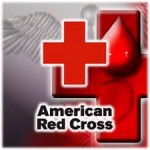Archive for Uncategorized
Diagnosing a Concussion
Posted by: | Comments Concussions are basically a bruising of the brain and can have several degrees of seriousness. Even a minor blow to the head can lead to permanent injury or death. You must treat any blow to the head seriously. Some can be as simple as the victim experiencing some mild confusion. Others that are more serious, a patient can have extended loss of consciousness with memory loss and coordination problems.
Concussions are basically a bruising of the brain and can have several degrees of seriousness. Even a minor blow to the head can lead to permanent injury or death. You must treat any blow to the head seriously. Some can be as simple as the victim experiencing some mild confusion. Others that are more serious, a patient can have extended loss of consciousness with memory loss and coordination problems.
In most cases, concussions will heal over time and do not cause longer term or permanent effects. Although repeated concussions can lead to a cumulative effect, which may cause permanent or longer term neurological problems.
Kids invariably hit their heads many times as they are growing-up. Running them to the hospital each time would be expensive and not necessary. If your child or any adult receives a blow to the head, do a quick and easy examination of the victim. If any of the following items are observed, call 911 immediately and keep the patient still and calm as you wait for help to come.
After receiving a blow to the head:
- The victim losses consciousness, no matter how short a time period.
- The victim experiences confusion.
- Nausea or vomiting.
- Blurred vision.
- Memory loss.
- Headache which seems to be getting worse.
- Repeating the same thing over and over (ie. asking what happened several times, even after you explained the occurrence).
- Unequal pupil size.
- The victims eyes unable (or skipping) to follow your finger, as you move it back and forth in front of their face.
- Complaining of neck or back pain.
If they do not experience any of these symptoms, some ice on the area can help control swelling and the uses of acetaminophen (Tylenol) or Ibuprofen (Motrin, Aleve) can help with any discomfort. When in doubt, always play if safe and have the individual seen by a physician.
7 Health Issues Identified By Your Body
Posted by: | CommentsCan different body parts tell you about your health? Absolutely, in fact the appearance or size of certain body parts can give an indication on specific health issues or possible disease. Based upon the results of several studies, here are some of the possible health issues associated to specific body parts.
Earlobes and Cardiac Disease – An earlobe crease or wrinkle on one or both earlobes may indicate cardiovascular disease. The American Journal of Medicine found in multiple studies that a crease on one lobe increased your risk of a cardiac event by 33%. Wrinkles on both lobes increased the risk by 77%.
Bra Size and Diabetes – Women with a bra size of a D cup or better were 1.5 times more likely to develop type 2 diabetes compared with women who wore an A size or smaller.
Finger Length and Osteoarthritis – Women whose index fingers were shorter than their ring finger were twice as likely to develop osteoarthritis in their knees.
Height and Age – Women 5-foot 2-inches or shorter are more likely to live longer than their taller counterpart.
Long Legs and Liver Disease – Though you may live longer being shorter, women with leg lengths between 20 to 29 inches had a higher incident of liver disease.
Arm’s Length and Alzheimer’s – Women with shorter arm spans were 1.5 times more likely to develop Alzheimer’s disease than those with longer reaches. Measure the span of your arms from fingertip to fingertip. A measurement of less than 60 inches puts you on the wrong side.
Blood Type – People with blood types of A, B or AB were 44% more likely to develop pancreatic cancer than those with type O.
Aspirin and Breast Cancer
Posted by: | Comments Several studies suggest women taking aspirin or NSAIDs may reduce the risk or reoccurrence of breast cancer. These studies have shown women after menopause who took the painkiller at least twice a week over a five year period, showed a 40% reduction in breast cancer risks.
Several studies suggest women taking aspirin or NSAIDs may reduce the risk or reoccurrence of breast cancer. These studies have shown women after menopause who took the painkiller at least twice a week over a five year period, showed a 40% reduction in breast cancer risks.
Though this studies are provocative, U.S. doctors caution that it is too early to begin recommending women to start an aspirin or NSAID regiment. This preliminary study shows an association but does not prove a cause and effect. Any long term use of aspirin can have side effects such as stomach bleeding and ulcers.
Still this is encouraging information and the basis for new studies, which may determine frequency and dosages recommendations. Please consult your physician before starting any medicine regiment.
Care for Poisonous Insect Stings
Posted by: | Comments With spring here and summer just around the corner, we find ourselves spending more time doing outdoor activities. The potential of getting bitten or stung by a spider or insect greatly increases. Though not all insect stings are poisonous, but several are and if bitten, immediate first aid care is necessary.
With spring here and summer just around the corner, we find ourselves spending more time doing outdoor activities. The potential of getting bitten or stung by a spider or insect greatly increases. Though not all insect stings are poisonous, but several are and if bitten, immediate first aid care is necessary.
Here’s a list of possible poisonous bites and stings and their treatments:
Black Widow Spider
Though rarely lethal a black widow bite can be serious. You can identify the black widow spider by the red hourglass marking on its belly. The black widow spider bite may not be painful at first. In fact, you may not even feel the bite. Soon afterwards you’ll begin to notice a bit of swelling and red marks developing. If not treated immediately, intense pain can develop. Joint stiffness, fever, chills, severe abdominal pain and vomiting will occur. Seek immediate medical attention and anti-venom treatments.
Brown Recluse Spider
The brown recluse is identifiable by the violin shaped marking on its back and it can produce a mild sting when it bites. Within a few hours local redness will develop at the bite site along with intense pain. A fluid filled blister will develop and pop leaving a gaping ulcer in the skin.
Clean the wound site with plain soap and water. Tie a snug bandage just above the bite site and towards the heart to slow the progression of the venom. DO NOT tie the bandage so tight that it cuts off circulation. Apply a cold cloth or a bag of water and ice combined to the injured site. Seek immediate medical attention.
Bee, Yellow Jacket, Wasp, Hornet
Bees lose their stingers when they sting and die soon after, but yellow jackets, wasp and hornets don’t lose their stingers and can inflict multiple stings. Most people will experience local mild swelling and itching. Taking an oral antihistamine for the itching and acetaminophen for the pain will be all the treatment you’ll need. Though some people can have a severe anaphylactic reaction. For those individuals, the use of an epipen (epinephrine auto-injector) would be necessary and continue to seek immediate medical attention.
Fire Ants
Found in most of the southern part of the United States, these ants look similar to most other ants. Except they can produce a powerful and painful sting. These ants will attach themselves to the skin with a powerful bite and produce several stings from their abdomen. This venom can cause red bumps that burn and itch. Also a painful puss-filled lesions may also occur. Ice packs antihistamines and pain relievers may relieve some of the discomfort. If a larger amount of stings occur, a severe life-threatening reaction may result. Immediate medical attention is needed.
Puss Caterpillar
Yes there is a Caterpillar that can be harmful to your health. This long haired Caterpillar has stingers hidden underneath their hairy body. When stung, a person will feel intense pain, develop a rash, accompanied by a fever, vomiting and severe muscle cramps. Remove stingers by using cellophane tape and seek medical attention.
Scorpions
Found mostly in the Southern and Western states and scorpion sting can be life-threatening. Though not all scorpions are venomous, those that are can cause a painful sting. If stung, you’ll experience severe pain, increased sweating, swelling, vomiting, itching and vision problems. Immediate medical attention is necessary.
Mosquitos
Other than causing an annoyance and a bite that causes us to itch, the mosquito can carry and transfer blood borne viruses like West Nile virus, Dengue fever virus and the Chikungunya virus. If you begin to experience a high fever, joint and/or back pain, vomiting and develop a rash, see your physician.
What is Dry Drowning?
Posted by: | CommentsAs a parent we are particularly cautious with our children in and around water such as lakes or swimming pools. Our concern is to make sure they are safe, having a fun experience, but more importantly that they don’t drown. Once they are out of the water our concerns wane, but this could be a false sense of security, a dry drowning can occur several hours after having been in the water.
Dry Drowning is essentially drowning, but without the body of water as the immediate cause. This can happen anywhere from one to 24 hours after having spent time in a pool or other water source. When a person aspirates a small amount of water into their lungs, it may get absorbed into the bloodstream causing an imbalance of electrolytes, diluting the blood and causing an abnormal heart rhythm, or it may block the normal absorption of oxygen into the blood stream causing either cardiac arrest or possible brain damage. Or it can also produce a condition called pulmonary edema, making breathing much more difficult.
Approximately 4,000 people die each year from drowning, of these about 10% to 15% can be classified as dry drowning. This is a significant number especially since high percentages are children.
In most cases of dry drowning, a person’s behavior may seem to be quite normal after they have been in the water. But there are a few signs to look for to help identify if there is a potential problem:
• A consistent cough that continues for a half hour or more.
• Shortness of breath.
• Pain in the chest.
• Lethargy.
• A dramatic change in their normal behavior, such as becoming combative or cranky.
These signs, if present should prompt you to seek immediate medical attention. Victims of dry drowning have the best chance of survival by being treated at a medical facility. If the victim loses consciousness and stops breathing, immediately call 9-1-1 and begin CPR by compressing the chest 30 times in a row, then deliver 2 rescue ventilation.
How to Care for a Nosebleed
Posted by: | CommentsAs summer approaches and the air becomes drier and looses it’s humidity, more people suffer from nosebleeds, especially children. Nosebleeds are a common occurrence. Most often they are a simple nuisance and not a true medical problem.
To care of a nosebleed:
- Sit upright and lean forward. By remaining upright, you reduce blood pressure in the veins of your nose. This discourages further bleeding. Sitting forward will help you avoid swallowing blood, which can irritate your stomach.
- Pinch your nose. Use your thumb and index finger and pinch on the bony part of your nose, just above the flexible cartilage. Continue to pinch for up to 10 minutes.
- Ice, the side of your neck. Many of the blood vessels that support the face come up from the side of your neck. Cooling the blood thickens it and helps in the clotting process.
- Pressure Point. Another alternative is to apply pressure under the front lip. Use a rolled up tissue or gauze pad.
- To prevent re-bleeding after bleeding has stopped, don’t pick or blow your nose and don’t bend down until several hours after the bleeding episode. Keep your head higher than the level of your heart.
If re-bleeding occurs, blow out forcefully to clear your nose of blood clots and spray both sides of your nose with a decongestant nasal spray containing oxymetazoline (Afrin, Neo-Synephrine, others). Pinch your nose in the technique described above and call your doctor.
Seek medical care immediately if:
- The bleeding lasts for more than 20 minutes
- The nosebleed follows an accident, such as a
 fall or an injury to your head, including a punch in the face that may have broken your nose
fall or an injury to your head, including a punch in the face that may have broken your nose
For frequent nosebleeds:
If you experience frequent nosebleeds, make an appointment with your doctor. You may need to have the blood vessel that’s causing your problem cauterized. Cautery is a technique in which the blood vessel is burned with electric current, silver nitrate or a laser. Also coating the front inner portion of the nose with Vaseline, first thing in the morning and at night, has proven to help reduce nosebleeds for many people with recurrent nosebleeds especially due to dry air or temperature changes. Call your doctor if you are experiencing nasal bleeding and are taking blood thinners, such as aspirin or warfarin (Coumadin). Your doctor may advise adjusting your medication intake.
10 Tips to Avoid Serious Infections During Your Pregnancy
Posted by: | Comments Here are the top 10 tips to help you avoid serious infections during your pregnancy. Infections during pregnancy can harm both you and your growing baby. It is important during this sensitive time to avoid opportunities of acquiring an infection while pregnant. Adhering to the following infection prevention tips will help keep you and your unborn baby safe.
Here are the top 10 tips to help you avoid serious infections during your pregnancy. Infections during pregnancy can harm both you and your growing baby. It is important during this sensitive time to avoid opportunities of acquiring an infection while pregnant. Adhering to the following infection prevention tips will help keep you and your unborn baby safe.
- Wash your hands frequently with soap and water especially after using the restroom, handling pets, preparing food, touching raw meats or eggs and when around people who are sick.
- Avoid sharing forks, spoons, cups, or food with other people.
- Cook all meats until they are well-done. Juices from cooked meats should run clear and there should be no pink inside.
- Avoid unpasteurized foods such as milk and cheeses. Unpasteurized products can contain harmful bacteria.
- Don’t touch or change dirty cat litter. Have someone else do it. If you must change the litter yourself, be sure to wear gloves and wash your hands afterwards. Dirty cat litter may contain harmful parasites.
- Avoid processed lunch meats, deli meats and hot dogs. Pregnant woman are 20 times more likely, than healthy adults, to get listeria, which can cause miscarriages and premature births.
- Stay away from rodents and their droppings. Have a pest control professional get rid of pests in or around your home. If you have a pet like a hamster or a guinea pig, have someone else care for it until your baby arrives.
- Ask your doctor about vaccinations. Some are recommended before, during pregnancy and right after delivery. Having the right vaccinations can keep your baby from getting sick or having life-long health problems.
- Avoid people who are sick or have any infections.
- Consult your doctor about group B strep. About 1 in 4 women carry this type of bacteria, but don’t feel sick. An easy swab test towards the end of
your pregnancy will show if you have this type of bacteria. Your doctor can recommend options to protect your baby during labor and after delivery.
These are just a few helpful safety tips for you to follow during your pregnancy to help protect your cherished cargo. Consult your doctor for more information and tips to protect your health during a pregnancy.
Baby Blue
Posted by: | Comments I can guess the color of your baby’s eyes without even looking at them. Their eyes are baby blue.
I can guess the color of your baby’s eyes without even looking at them. Their eyes are baby blue.
You inherit the color of your eyes from your parents. Melanin is a protein that produces the brown pigmentation for your hair, skin and eyes. This coloring protein has not been fully deposited into the baby’s eyes at birth and may take a while for it to fully develop.
As the melatonin increases with age and exposure to sunlight occurs, the color of their eyes will change. The more melanin the darker the eye color. So people with dark brown eyes have a lot of melanin in the iris and those with blue or green eyes will have less.
Your baby’s eye color can change several times. The most significant changes occur between the ages of six (6) months and nine (9) months. Your baby’s eye color will most likely become permanent by their first birthday. So enjoy those baby blues while you can.
Giving Blood
Posted by: | Comments Giving blood can save up to 4 lifes. Most of the time we think of blood being used or needed for emergencies, but it is also used for people with cancer, heart disease and sickle cell anemia. One person can donate one pint of blood which could be used to save up to 4 people. Anybody over the age of 17 and who weighs at least 110 pounds has the ability to give blood. Giving blood is easy and can give you a great feeling knowing you have potentially helped save several lives.
Giving blood can save up to 4 lifes. Most of the time we think of blood being used or needed for emergencies, but it is also used for people with cancer, heart disease and sickle cell anemia. One person can donate one pint of blood which could be used to save up to 4 people. Anybody over the age of 17 and who weighs at least 110 pounds has the ability to give blood. Giving blood is easy and can give you a great feeling knowing you have potentially helped save several lives.
Before donating blood it is suggested you do the following:
- Drink plenty of water and/or juices
- Eat a good breakfast or lunch
- Avoid eating exceptionally fat foods beforehand
- Wear comfortable clothes for easy access to veins
Not only are you doing a good thing for others, you are also creating a few benefits for yourself. If your blood has a high viscosity, or resistance to flow, repeated blood donations may help the blood flow in a way that’s less damaging to the lining of the blood vessels and could result in fewer arterial blockages
Also, you’ll receive a free mini check-up. Before you give blood, you’ll first have to complete a quick physical that measures your temperature, pulse, blood pressure and hemoglobin levels. After your blood is collected, it’s sent off to a lab where it will undergo 13 different tests for infectious diseases, like HIV and West Nile virus. If anything comes back positive, you’ll be notified immediately.
So give the free gift of life which may help save a life of someone’s loved one, give blood.
Choosing the Right Public Restroom Stall
Posted by: | Comments Choosing the right public restroom stall can have an impact on your health. Several studies have shown that each stall has different levels of contamination. Selecting the correct stall can make a difference.
Choosing the right public restroom stall can have an impact on your health. Several studies have shown that each stall has different levels of contamination. Selecting the correct stall can make a difference.
The center stalls seem to be the worst. These stalls have more exposure to the floating droplets of water that are expelled during the flushing process. These droplets can carry germs, urine and feces which land on the toilet seat and handle.
Most people want some type of privacy and will bypass the first stall and select one that is further from the door. This means the end stalls receive more activity and create more opportunities for contamination. Now you can’t catch an STD from a toilet seat, but you can become ill by touching contaminated surfaces and then neglecting to wash your hands.
The best stall to choose is the one that is closest to the door or the first stall as you enter the restroom. This stall is usually used less and doesn’t receive as many of the floating contaminates. Another benefit, because of their frequency of use, is they usually have more available toilet paper.
In any event, always practice safe hygiene by washing your hands with soap and water after using the restroom. Use a paper towel when opening the restroom door, an when you’re finished, stand before you flush. When toilets are flushed, a fine mist of water containing contagious bacteria can spray upwards.







